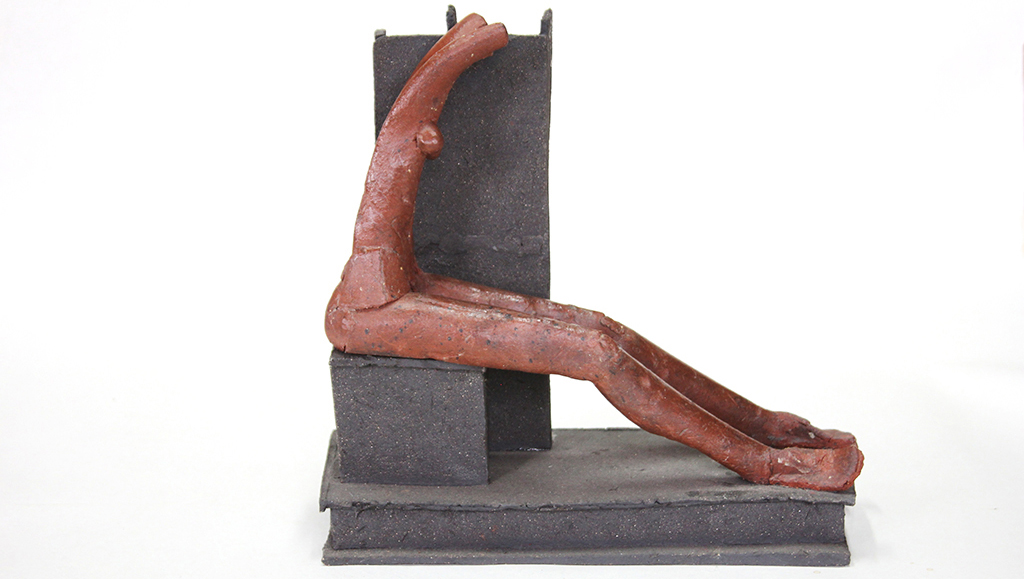About Mo |
> For Mo's CV click here |
Figuration is a hit and miss affair in modern British ceramics. The human form is often academicised or caricatured into essential stasis by contemporary artists. But for Mo Jupp it has been much more than a subject, for he has always been beguiled by femaleness, the body as a place for celebration, affection and enchantment (in the proper sense of the word). A landscape to be gauged and re-gauged. Other art may come to mind when we view Mo's work; Ancient Egyptian and Romanesque sculpture, sub-Saharan tribal carving, and a good deal else. Yet in viewing his figures afresh, it is the combination of the ideal and the ordinary the prosaic, that is so attractive. This is the realm of artists like Degas, where the female nude is a comple of attitues; taut or limp, standing or resting, tired or alert, the positions relaxed, observing, often provocative. Jupp homes in on posture; the torso turned or twisting, legs crossed, open or squeezed up against the chest. The pear - another favourite Jupp motif - is treated with the same quirkiness, a fruit with its own gait and personality. Like Degas, this is a sculpture of demeanour, each a study of articulated form in which exaggeration and fragmentation - an extended sinewy limb or an attenuated torso - conveys a greater truth about how one actually feels. It is also how we can see and think of one another, the distortion of appearance and memory. Yet highly individualised though each of these figures are, there is still a sesnse of archetype, a drawing on tradition, which gives each work its characteristically totemic presence, however small the piece. This totemism was taken to its physical limits in a memorable display of figurative vertical rods that delineated the space of a Sussex garden (Peter's Barn Gallery) back in 1997. |
The work keeps its freshness and energy because of Jupp's sheer engagement with the clay. It is a material he knows so well, where each join and joint, each tuck and squeeze, is accentuated by green washes and coerings of slip, often rubbed back to reveal the colour beneath. This exhibtion [solo exhibition in 2013 in The Oxford Ceramics Gallery] shows a significant return to another Jupp archetype, the helmet theme which first established his international reputation in the early 1970's, but which has lost none of its dark menace. David Whiting |
